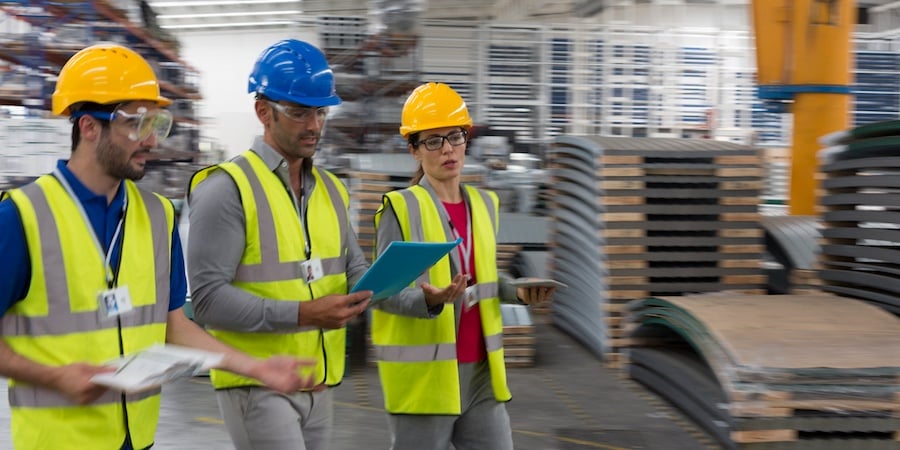
Topics:
November 7th, 2018
2 min. read

Worker safety continues to be a major focus in the manufacturing industry. Creating a culture of safety has many components, and it all starts with leadership playing a key role in the success of a program.
A safety walkaround is one way that leaders can show their commitment to their organization’s safety program. and it accomplishes two goals:
Before you start your walkaround, it’s important to do your pre-inspection. Look at past inspection reports and any previously noted concerns or safety violations. Examine your past workers’ comp claims and injury reports, talk to your other managers and supervisors about their concerns, and also meet with your workplace safety committee.
 The Safety Walkaround
The Safety WalkaroundWhen it’s time for your inspection, avoid having too many people involved, which can inhibit communication with other workers who are out on the floor. Make sure you practice what you preach by wearing the proper PPE during your walkaround.
Be alert to hazards, some of which may include:
Create a list of the hazards you find and prioritize which areas need to be addressed first based on the severity.
Once you’ve completed your inspection, follow through on your commitment to improve the organization’s safety. Prepare a plan to address the items on your list. Be sure to include the corrective actions and a reasonable amount of time for those things to be implemented.
Share your plan with fellow supervisors as well as the floor workers. Then put the plan into action and, after that, check in with them frequently to make sure that things are still going okay.
Your employees are your greatest asset, and the best way to ensure their well-being is to have everyone embrace a culture of safety. It’s not enough to simply have a safety committee. It needs to start with your leadership, taking the time to engage with your workers, listening to their concerns, digging deeper, and then following through on making those improvements.
New technology is making it easier than ever to efficiently manage safety programs, ensure OSHA compliance and lower workers' compensation costs. To learn more, download the whitepaper below.
For more safety management resources, visit our Workplace Safety page.
Jodi Wellhoefer, Strategic Risk Advisor
As an employee benefits strategic risk advisor at McClone, Jodi focuses on organizational performance and bottom-line results for her clients. She is responsible for educating clients on employee benefit solutions, building relationships and designing custom employee benefit programs. With more than 25 years of experience in human resource management, Jodi has a unique perspective on employee benefit programs and how they impact recruiting and retention strategies. Prior to joining McClone in 2018, Jodi served in various HR roles, including District Manager, HR Director and VP of Operations. Her knowledge and experience in employee benefit programs, communication and engagement, makes her a trusted advisor to her clients. Jodi holds a bachelor’s degree in sociology from the University of Wisconsin-Stevens Point, and has professional designations from both the HR Certification Institute (HRCI) and the Society for Human Resource Management (SHRM). She is a past president of Fox Valley SHRM, and the current North Central Director on the State Council for WISHRM.
Topics: